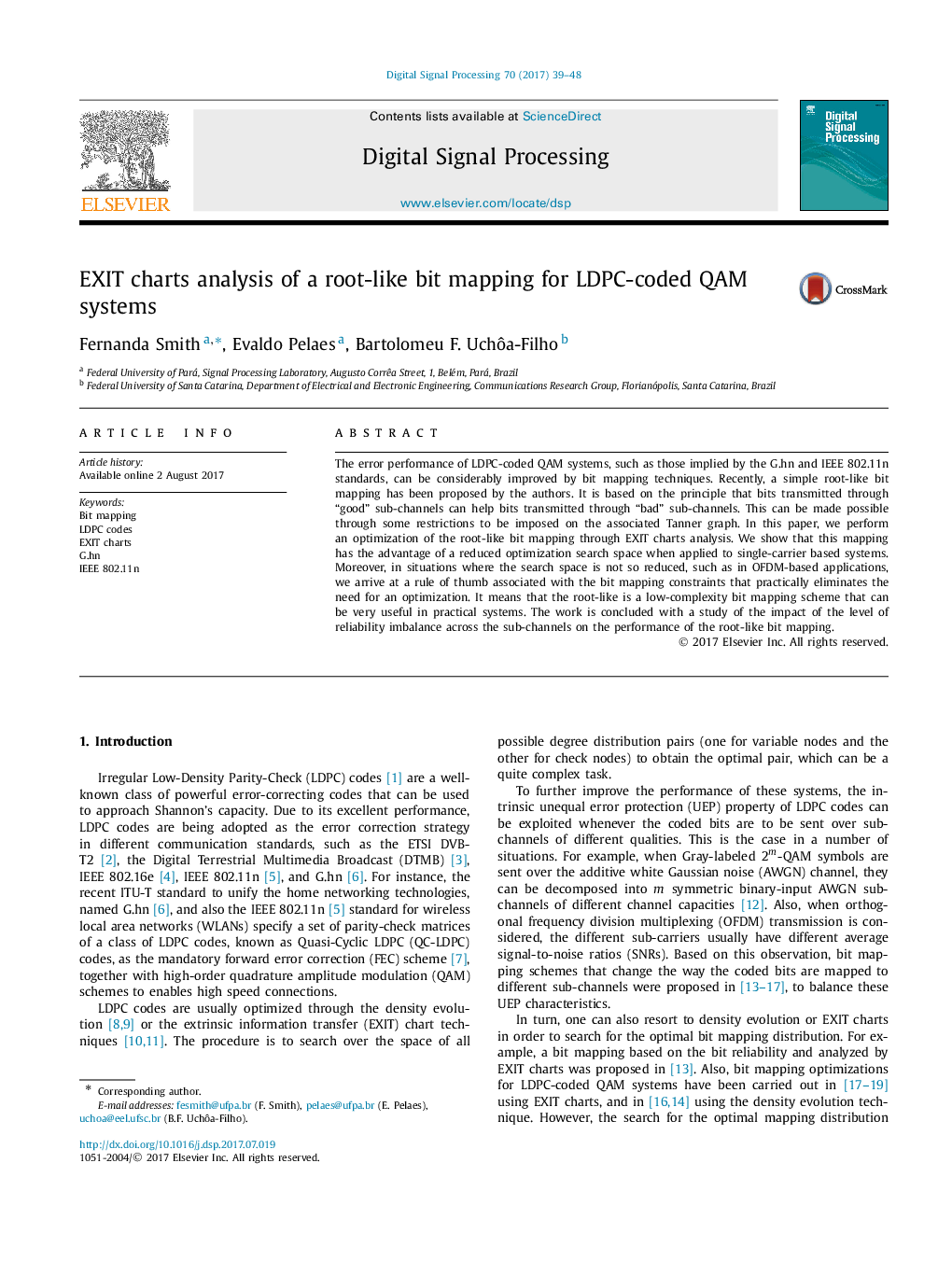| Article ID | Journal | Published Year | Pages | File Type |
|---|---|---|---|---|
| 4973759 | Digital Signal Processing | 2017 | 10 Pages |
Abstract
The error performance of LDPC-coded QAM systems, such as those implied by the G.hn and IEEE 802.11n standards, can be considerably improved by bit mapping techniques. Recently, a simple root-like bit mapping has been proposed by the authors. It is based on the principle that bits transmitted through “good” sub-channels can help bits transmitted through “bad” sub-channels. This can be made possible through some restrictions to be imposed on the associated Tanner graph. In this paper, we perform an optimization of the root-like bit mapping through EXIT charts analysis. We show that this mapping has the advantage of a reduced optimization search space when applied to single-carrier based systems. Moreover, in situations where the search space is not so reduced, such as in OFDM-based applications, we arrive at a rule of thumb associated with the bit mapping constraints that practically eliminates the need for an optimization. It means that the root-like is a low-complexity bit mapping scheme that can be very useful in practical systems. The work is concluded with a study of the impact of the level of reliability imbalance across the sub-channels on the performance of the root-like bit mapping.
Keywords
Related Topics
Physical Sciences and Engineering
Computer Science
Signal Processing
Authors
Fernanda Smith, Evaldo Pelaes, Bartolomeu F. Uchôa-Filho,
